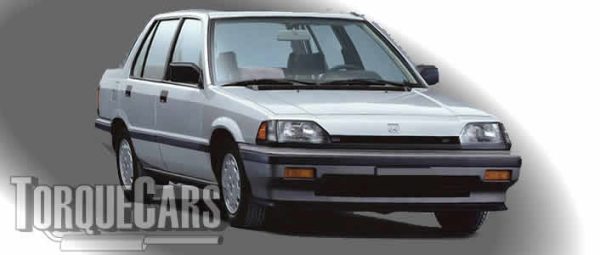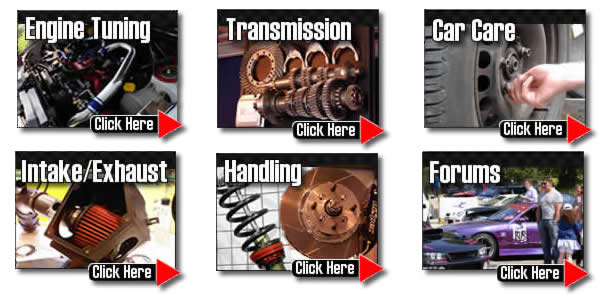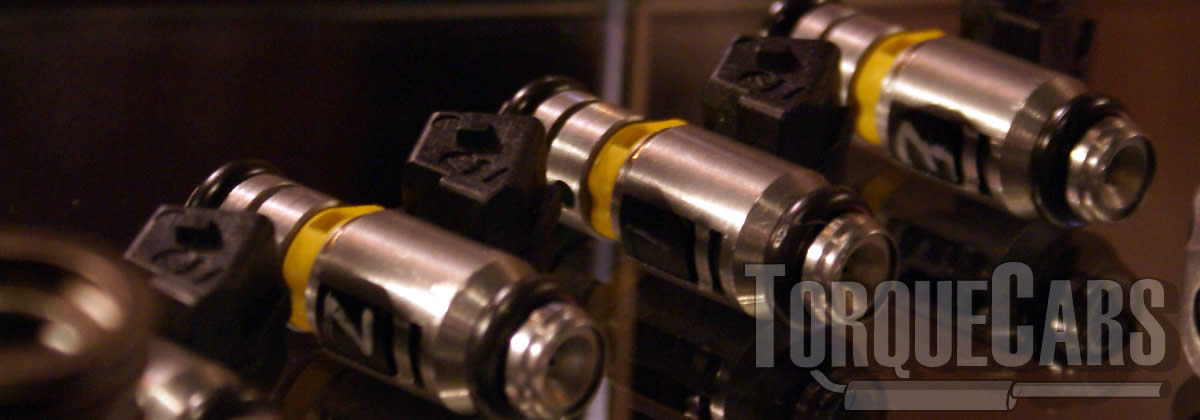Honda Civic 3rd Gen Tuning
"All you need to know about tuning the Honda Civic 3rd Gen engine!"
The Honda Civic 3rd generation was offered between the years 1983 and 1987.
The main difference from the past generation was that the length of the wheelbase was considerably increased. The following change in length was introduced in the cars:
- Hatchback: Increased by 2 inches;
- Sedan: Increased by 5 inches.
The cars were loved right from their launch and that’s why this generation won the Car of The Year Japan award in 1983.
The vehicles were offered in four different body styles which were:
- 3 door hatchback format with platform codes AG-AH/AT;
- 3 door coupe with platform codes AE-AF;
- 4 door sedan with platform code AJ-AK/AU;
- 5 door station wagon with platform code AJ-AK/AR.
In response to requests for additional information on tuning and constructing a customised Civic 3rd Gen, specifically which turbo improvements work best, we've produced this article, which covers our go-to engine changes and what we believe to be the highest value modifications you can perform..
To enhance your driving experience, the Honda Civic 3rd generation is an excellent project engine for installing carefully selected performance modifications such engine remaps, turbo kits, and camshafts.

The North American CRX variant had 2 seats whereas, in other regions, it was offered with the 4 seat configuration.
Check out our video introduction to Honda Tuning, all you need to know about mods and upgrades on your Honda.
The shuttle/ wagon version was known as the Wagovan in the US and the Pro model offered to the Japanese market was relatively larger than the models offered elsewhere.
The 3rd generation Honda Civic was momentous because it was the first time that Honda offered the 4 wheel drive technology.
The 8 valve engine was fuel-efficient which became one of the highlights of this model and assisted Honda in bolstering the Civic brand.
TorqueCars will examine Civic 3rd Gen tuning and outline the best modifications.
We have Civic tuning guides covering Civic 3rd Gen Mods, Civic 4th Gen Mods, Civic 5th Gen Mods, Civic 6th Gen Mods, Civic 7th Gen Mods, Civic 8th Gen Mods, Civic 9th Gen Mods, and Civic 10th Gen Mods
History of the 3rd Generation Honda Civic
The Honda Civic 3rd generation was introduced in 1984 and was available until 1987. It was available with the following engine options:
- ZA1/2 I4 1187 cc
- EV/EV1 I4 1342 cc
- EW1/2 I4 1488 cc
- EW3/4 I4 1488 cc
- EW5 I4 1488 cc
- ZC I4 1590 cc
We recommend the following engine choices for the Honda Civic 3rd generation as the best project base to work on and most fun to drive:
- 1488 cc EW5 I4 that produced 99 hp and 129 Nm torque;
- 1590 cc ZC I4 that produced 114 hp and 134 Nm torque;
- 1488 cc EW 3/4 I4 that produced 91 hp and 126 Nm torque
The following are the most popular Honda Civic 3rd generation swaps:
Hasports is a well-known brand that provides a large range of components for Honda Civic engine swaps, and so these mounts are available from them.
Using the D series engines is a complicated procedure since, unlike the B series, fitting them is not a bolt-in process.
However, because to its bolt-in design, some auto enthusiasts say that the DOHC D16A fits readily.
Tuning the Honda Civic 3rd Gen and best Civic 3rd Gen performance parts.
Best Civic 3rd Gen modifications
When talking about the best modifications for your Civic 3rd Gen engine, we are going to concentrate on the upgrades that achieves the biggest return for your cash.

We have Civic tuning guides covering Civic 3rd Gen Mods, Civic 4th Gen Mods, Civic 5th Gen Mods, Civic 6th Gen Mods, Civic 7th Gen Mods, Civic 8th Gen Mods, Civic 9th Gen Mods, and Civic 10th Gen Mods
Check out our video introduction to Honda Civic Tuning, all you need to know and full guide.
Best mods for your Civic 3rd Gen
- Fast road Camshafts are are often the best upgrade for an engine, but should always be applied to your engine by someone understands performance engines and you might struggle to find one but there might be a local firm to regrind a stock camshaft .
- Air Induction Mods and Performance Exhausts - Please be warned on their own these mods will NOT ADD PERFORMANCE , but they will enable you to lift power after other mods by lessening the restrictive flow.
- Head work - The goals of porting and flowing the head are to get air flowing into the engine while removing flow restrictions and turbulence.
- Lighter flywheels - a reduced weight flywheel will improve the engines free revving nature. Not suitable for all Civic 3rd Gen engines.
- Turbo upgrades - Adding a turbocharger is the most dramatic method to increase your intakes air supply, this means you are able to burn more fuel and make better power figures. Although one of the most complex upgrades it offers big gains.
- Brake Upgrades - Improve your ability to stop needs to be somewhere in your mods list.
- Civic 3rd Gen Suspension - Replacing worn bushings and shocks radically improves your Civic 3rd Gen handling Coilovers and Bushings are the usual go to mods
Civic 3rd Gen Tuning Stages
Typical stage 1 mods often include: Drilled & smoothed airbox, Piggy back or Aftermarket ECU, Panel air filters, Fast road camshaft, Intake manifolds, Sports exhaust manifold.
Typical stage 2 mods often include: Ported and polished head, Suspension (Sports), induction kit, high flow fuel injectors, Sports catalyst & performance exhaust, Fast road cam.
Typical stage 3 mods often include: Adding or Upgrading forced induction (turbo/supercharger), Competition cam, Engine balancing & blueprinting, Crank and Piston upgrades to alter compression, Twin charging conversions, Internal engine upgrades (head flowing porting/bigger valves).
Civic 3rd Gen Handling/Suspension Upgrades
Adjusting the handling is often the first step in using the Civic 3rd Gen. Adjusting the Civic 3rd Gen's handling is often the first step in modding it.
One of the most popular reasons for modding your Civic 3rd Gen suspension is to better its handling. In spite of this, we repeatedly witness the same mistakes over and over again.
Coilovers permit you to adjust your ride height and this allows you to tweak your cars handling.
One of the most popular reasons for tweaking your Civic 3rd Gen suspension is to improve its cornering. However, we see the same errors often repeated again and over.
Improvements to the bushings
If your Civic 3rd Gen is also used as a daily driver, what aspects should you take into account while setting up and choosing your suspension bushings?
The Civic 3rd Generation's suspension components may be attached to the car's chassis via bushes, which are rubber attachments that can be rotated. These rubber ones will eventually wear out.
Your vehicle's performance may be considerably enhanced by installing new OEM rubber bushings in their place.
Durability and handling are more important than ride quality since polyurethane bushes last longer and are more rigid.
Stress on other suspension components may be accelerated as a result of increased vibration and play.
If rubber bushes are too loose, a new set of polyeyurothane bushings could help.
However, although certain poly bushings might be difficult to track down, major mounts can usually be found in most areas. Custom poly bushes may be an option if your requirements are specific enough.
How low should you go on the Civic 3rd Gen?
TorqueCars research and testing indicate that the maximum suspension drop for most road vehicles is 23 - 44 millimetres, whereas the maximum suspension drop for cars that are factory fitted with lowered springs is 17 millimetres.
These tolerances may be drastically reduced if the wheel size is changed. Even with 16 or 17-inch wheels and conventional suspension, lowering the vehicle may create a a slew of problems.
Civic 3rd Gen Camshaft Upgrades
Fast road cams are more suited to gasoline engines than diesel engines since they perform better at higher RPMs. Most engines may benefit from a boost in peak power from installing performance camshafts.
In terms of engine performance, camshaft changes may make a significant impact. Because the durations of the intake and exhaust valves are affected by the camshaft profile, substantial improvements in power are possible with camshaft changes.

Fast road cams tend to push up the power throughout the rev range, you might lose a little bottom end torque but higher rpm power will be better.
However, the vehicle will not idle smoothly, and low-end power almost always decreases when using competition camshafts.
Ideally, you should tailor your horsepower range to suit your needs in a daily driver.
Using a Civic 3rd Gen Competition camshaft in heavy traffic will not be comfortable at all.
This is due to the fact that a bumpy idle increases the likelihood of the engine stalling and makes low-speed smooth driving difficult. The upper end of your RPM range is where you want the power to be if you're working on a race vehicle, therefore it doesn't matter.

Each Civic 3rd Gen engine has a unique response because of the production tolerances and quality variances, so examine your engine on a rolling road to see how well it is manufactured and when cams are installed to see how aggressive the cam durations are.
BHP increases will be influenced by the ecu map, fueling, and fuel pump.
The horsepower band may be altered by adjusting the duration and lift of the intake or exhaust valves, and this can be done on most engines.
To prevent squandering your time and money, make a game plan, decide on your improvements, and then go out and purchase them.
Air Flow improvements on the Civic 3rd Gen
Everything a vehicle tuner does revolves on getting more air and fuel into the Civic's third-generation engine.
During the suck phase, the intake manifold allows air from the filter to go into the engine, where it is combined with gasoline.
Fuel atomization on the Civic 3rd Generation may be greatly improved by the intake manifold's bore size, shape, and flow rate.
Most of the time, plenum chambers can be enhanced by the use of aftermarket components, but there are a few manufacturers that provide plenum chambers that are already properly optimised and the 3rd Gen Civic is no exception here.
As a result of the larger valve conversions on the Civic 3rd gen, as well as the port enlargement and head flow on the 3rd gen Civic, you'll be able to get more horsepower and torque from other enhancements.
Civic 3rd Gen Turbo upgrades

NA (naturally aspirated) engines need quite a lot of work when you add a turbo, so we have a separate guide to help you take into account the pros and cons of going this route on your Civic 3rd Gen
The more air you can get into an engine, the more fuel it can burn and uprating the induction with a turbocharger upgrade makes massive power gains.
There are reliable limits for every engine, with some being very over engineered and some only just able to handle stock power. Discover these limits and upgrade to stronger pistons, crank and engine components to survive the power.
We see many mechanics spending a stack of money on turbo upgrades on the Civic 3rd Gen only to watch the engine block catastrophically fail when it's used in anger.
Large turbo chargers often experience no power at low rpm, and small turbo chargers spool up much more quickly but don't have the peak rpm bhp gains.
Over the last 20 years the world of turbochargers is always increasing and we are seeing variable vane turbochargers, where the vane angle is altered according to speed to lower lag and increase top end performance.
Twin scroll turbochargers divert the exhaust flow into two channels and flow these at differently profiled vanes in the turbo. They also improve the scavenging effect of the engine.
It is common that there is a restriction in the air flow sensor MAP/MAF/AFM on the Civic 3rd Gen when loads more air is being fed into the engine.
Going up you'll find 4 bar air sensors coping with quite large power gains, whereas the OEM air sensor limited power at a much lower level.
Civic 3rd Gen Fuelling Upgrades
You will need to ensure that the engine is not starved of fuel so need to ramp up the fuelling when you start extending past 20% of a bhp and torque increase. Boosting the fuel pressure can improve the acceleration responsiveness.
Early carbureted engines may be converted to dual carbs or multiple throttle bodies for increased power.
You'd be better off upgrading to fuel injection since it's simpler to tune and setup for greater power improvements.
Because it enhances throttle responsiveness, the fuel pressure regulator is a useful addition for injected vehicles.
 Most tuners we speak with say to over specify your injectors flow rate.
Most tuners we speak with say to over specify your injectors flow rate.
The rule of thumb is to add 20% when buying an injector, this takes into account injector deterioration and allows you some spare capacity should the engine require more fuel.
We think this one is common sense, but you'll need to match your fuel injector to the type of fuel your car uses as well.
Civic 3rd Gen Performance Exhausts
If your present exhaust is producing a flow issue, you merely need to increase your exhaust.
Even with moderate power boosts, most factory exhausts have a respectable flow rate, but if you want to increase your horsepower, you'll need a more efficient exhaust.
Choosing the biggest exhaust you can find will limit the exhaust flow rate; the optimum exhausts for power improvements are typically 1.5 to 2.5 inches in diameter. The design and materials of the bore are more important than the diameter.
Modifications like a sports catalyst, which has a bigger size and surface area than a standard catalyst and so increases performance to levels you'd anticipate even without a catalyst, are ideal for street-legal automobiles.
And because of its larger interior surface area and design, it will allow for complete exhaust flow.
Since removing a catalyst from a road-registered car is against the law in many places (and you can't even replace a functional catalyst in many others), the alternative test pipe mod or cat removal should only be used off-road.
Weak spots, Issues & problem areas on the Civic 3rd Gen
The Civic 3rd Gen engines are fairly reliable as long as they are well maintained.
Carbon build up in the head, particularly around the valves which will sap power or create flat spots, this is a very common problem on direct injection engines but should be looked out for on all engines. We have tips on removing carbon By avoiding short journeys where the engine doesn't warm up and using good quality fuel you can reduce this risk.
Regular oil changes are vital on the Civic 3rd Gen, and more so when the car is modified and will help extend the life and reliability of the engine.
If you want to learn more, or just get feedback on Tuning your Civic 3rd Gen engine please join us in our friendly forum where you can discuss Civic 3rd Gen tuning options in more detail with our Civic 3rd Gen owners. It would also be worth reading our unbiased Honda tuning articles to get insights into each modification and how effective they will be.
Please help us improve these tips by sending us your feedback in the comments box below.
We appreciate people taking the time to tell us what our readers have got up to and which modifications work best for them on each model of car. We use your comments and feedback to improve the accuracy of these Civic 3rd Gen tuning guides which get regular updates and revisions.
Please Check out my YouTube channel, we're regularly adding new content...
PLEASE HELP: I NEED YOUR DONATIONS TO COVER THE COSTS OF RUNNING THIS SITE AND KEEP IT RUNNING. I do not charge you to access this website and it saves most TorqueCars readers $100's each year - but we are NON PROFIT and not even covering our costs. To keep us running PLEASE Donate here
If you liked this page please share it with your friends, drop a link to it in your favourite forum or use the bookmarking options to save it to your social media profile.
Feedback - What do You Think?
Please use our forums if you wish to ask a tuning question, and please note we do not sell parts or services, we are just an online magazine.
Help us improve, leave a suggestion or tip
Please watch this video and subscribe to my YouTube channel.

 Click to accept YouTube Cookies & Play.
Click to accept YouTube Cookies & Play.